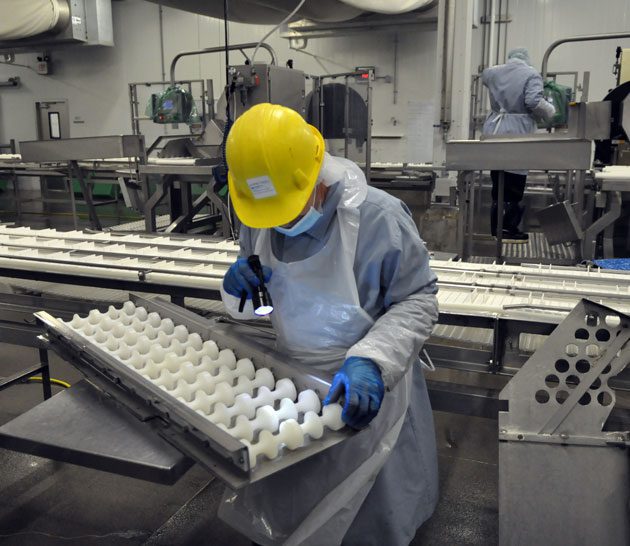Preventing
Foodborne Illness
At Maple Leaf Foods, we want you to enjoy our products safely. That’s why we focus – a lot – on preventing bacteria that can make you sick.
We call these bacteria “pathogenic”.
Comprehensive food safety program
Our comprehensive food safety programs seek to destroy bacteria before they can cause illness. In this way, we ensure the highest level of food safety for our customers.
If you have symptoms of a foodborne illness, seek medical attention immediately.


A guide to common foodborne bacteria
Learn about the sources of pathogenic bacteria and symptoms of foodborne illnesses.
| Bacteria | Most Common Sources | Symptoms |
|---|---|---|
| Listeria monocytogenes | – Unpasteurized/raw milk/dairy – Soft cheese – Lunch meats/unheated hot dogs – Raw produce | Listeria monocytogenes poses little risk to most healthy people, but people with weakened immune systems, the elderly, pregnant women, and newborns are most often at risk. Infections often begin with fever and gastrointestinal symptoms but can spread to the bloodstream and/or the nervous system. In pregnant women, L. monocytogenes can also spread to the fetus, causing premature delivery, miscarriages, or infections in the newborn baby. Symptoms usually appear within 2–30 days. Symptoms of milder forms can appear in as little as one day. |
| Salmonella | – Raw/ undercooked poultry – Raw/ undercooked meat – Raw/ undercooked eggs – Unpasteurized/raw milk/dairy – Raw produce | Salmonellosis infections can cause diarrhea, fever, vomiting, and abdominal cramps, which usually appear 12–72 hours after eating contaminated food and may last up to 7 days. |
| Campylobacter | – Raw/ undercooked poultry – Raw /undercooked meat – Unpasteurized/ raw milk/ dairy – Contaminated water | Campylobacter infections usually cause diarrhea (often bloody), fever, and stomach cramps. Nausea and vomiting may accompany the diarrhea. These symptoms usually start 2 to 5 days after the person ingests Campylobacter and last about one week. |
| E. coli O157:H7 | – Raw/ undercooked meat – Raw produce – Unpasteurized/ raw milk | E. coli O157:H7 infections can appear within hours and up to 10 days after consuming the bacteria. The most common symptoms include severe abdominal pain and bloody diarrhea. The majority of people recover within 7 to 10 days. Some people may not experience symptoms but can still carry the bacteria and spread the infection to others. |
| Clostridium perfringens | – Improperly refrigerated cooked foods, leftovers | Most people with C. perfringens infection develop diarrhea and stomach cramps within 6 to 24 hours after eating contaminated food. The illness usually begins suddenly and lasts for less than 24 hours. |
The Facts


Listeria
Listeria is an environmental bacteria that can live in cool, moist environments like floors, drains, and refrigerators and can grow on protein products. Here’s how we’re preventing the bacteria in our plants and on our products.


Salmonella
Salmonella is a bacteria that occurs in live animals and can transfer to meat and poultry during processing. Salmonella bacteria can also be found in the environment. Here’s how we’re preventing Salmonella on the products we sell.


Allergens
Most common allergens in food include milk, eggs, mustard, peanuts, crustaceans, fish, sesame seeds, soy, sulphites, tree nuts, and wheat. Allergens posing the greatest risk to people are nuts. Here’s how we’re protecting our consumers from allergens.